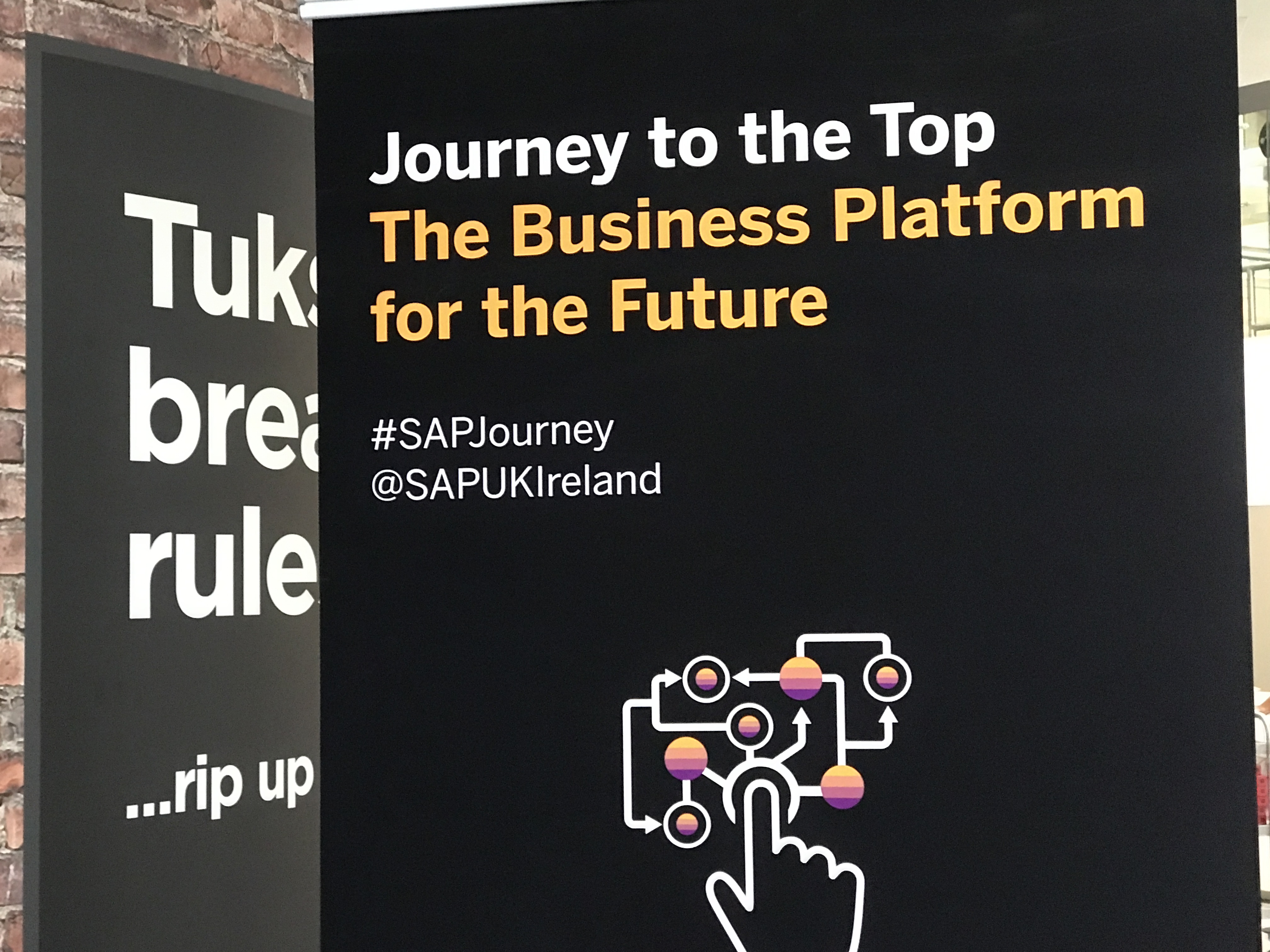I recently had the honor of delivering the keynote at the “The Journey to the Top” Event at SAP UK headquarters, and you can see my slides and a video in my previous post How Data is Powering The Future of Business: Trends and Opportunities.
Here’s what I took away from the event:
The world is changing—so we should probably innovate!
Many presenters took the opportunity to remind the audience about some of the underlying global trends that are both forcing and enabling innovation. Thankfully, most avoided this kind of opening, which plagues analytics presentations to this day!
“Did you know there’s more data THAN EVER BEFORE?!” (er, yes, we did)…
Expectations are higher than ever
The higher expectations of customers and users was a general theme throughout the day—whatever we’ve been doing in the past, it’s time to rethink and do better.
Why? Because new technologies mean that more intuitive interfaces—such as natural-language and voice interaction—are now possible. And because if companies or IT departments don’t implement them, they risk losing their roles to someone who will!.
Richard Mooney showed off some of the new possibilities, with a demo of natural language querying, powered by machine learning. In general, new “augmented analytics” features allow organizations to rethink analytics throughout the organization, breaking down many of the useability barriers that have stopped data from being used more widely.
He also pointed out that there’s been a tipping point in “data gravity” when it comes to the cloud. The growth of cloud applications and cloud data has been much higher than on-premise data (and accelerating)—making the value proposition of cloud-based analytics much clearer.
We’ve come a long way together—but the world continues to change
Most of the attendees have been existing users of SAP for many years (thank you!), and have lived through the evolution of different products.
But taking advantage of the benefits of new in-memory and cloud architectures has required a rethink and re-architecture of many SAP products, from S/4HANA to SAP Analytics Cloud.
Inevitably this means that the audiences had lots of questions and many of the sessions were about the transition roadmaps, giving them detailed information on how and when they might consider moving to the newer platforms.
For example, Gerd Danner explained the digital core strategy of S/4HANA is key part of the journey, emphasizing that while the new platform gives you a lot more real-time analytic power, without any data duplication, you still need a data warehouse and analytics strategy over time and across different systems.
Karsten Ruf, in turn, took the audience through the detailed SAP roadmap around BW4/HANA V2 and the brand-new SAP Data Warehouse cloud.
People, collaboration, and ease of use
Many of the sessions included welcome emphasis on the role of people in business processes. For example, Christoph Tillman explained new support for collaborative enterprise planning within the SAP Analytics Cloud.
And Umar Khan explained how SAP Fiori interfaces can be used to rethink business processes from a more user-centric point of view, including easy access from mobile devices.
Business content, not just technology
One of the biggest differentiators for SAP has always been alignment with business processes. Throughout the day, presenters emphasised that SAP solutions include both technology AND business content.
For example, the SAP data warehouse solutions include predefined schemas and content for different business areas.
And, of course, a lot of that business content comes from partners like AgilityWorks and Keytree, who showed off their solutions built on the SAP Business Technology Platform.
SAP and Cloud Dev Ops
In a fascinating session that demonstrated the power of cloud-centric approaches, SAP Partner Centiq and their customer Thames Water outlined the work they had done to enable SAP systems on the Microsoft Azure platform.
Thames Water explained that they had turned to the cloud for security, speed, and consistency, and the Centiq Dev Ops framework had enabled them to create push-button installations of SAP HANA, BW4/HANA, and S/4HANA that could be spun up or stopped in minutes, with a console that’s “so easy even the CEO could do it!”.
It’s all about the data foundation!
A summary of the day could be that “Data is more valuable than ever before — IF you have a solid information foundation.”
Digital transformation applies to SAP, too!
Finally, I’d like to thank everybody who attended, and many thanks to Jonathan Freeland for inviting me to present. We know that digital transformation is something that is happening to all of us, including SAP. We’re not in the business of technology, we’re in the business of business innovation, and we know we need to optimize your end-to-end experience with our company.
We hope that events like this, giving you candid, detailed, pragmatic information can help you in your steps to becoming the “intelligent enterprises” of the future.










